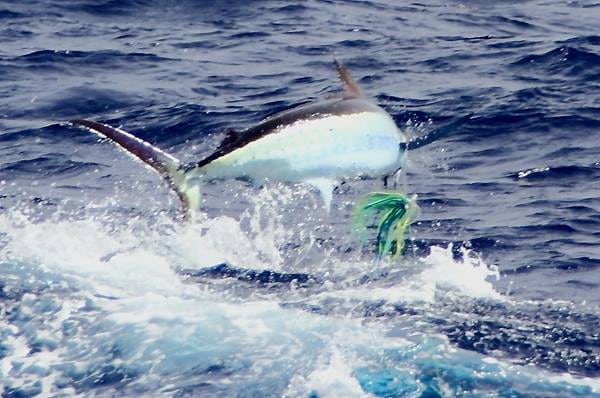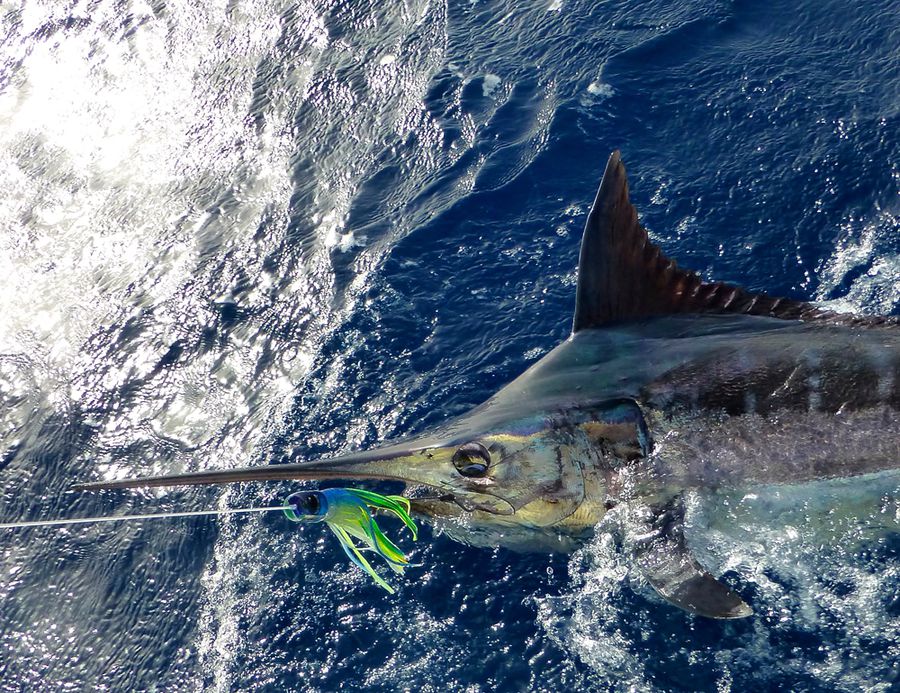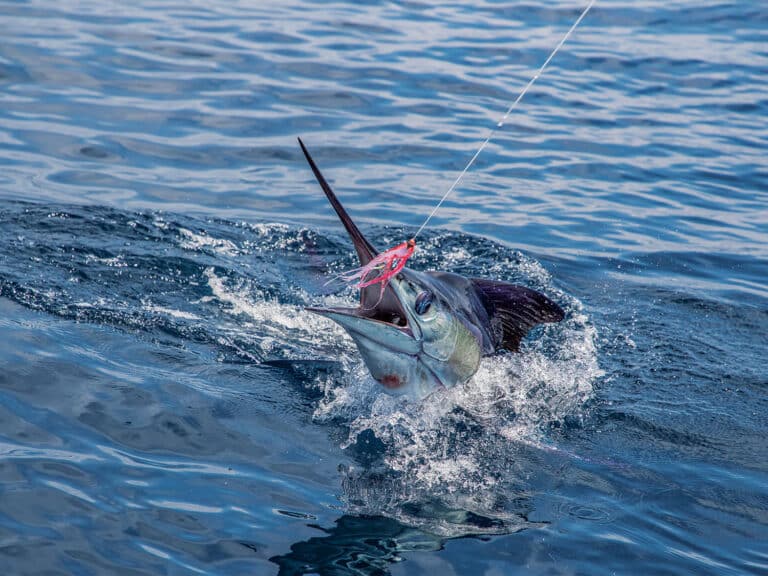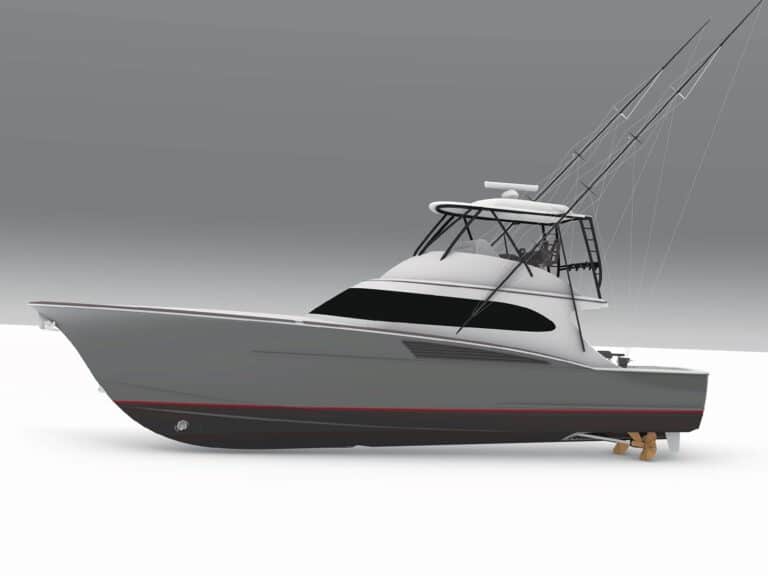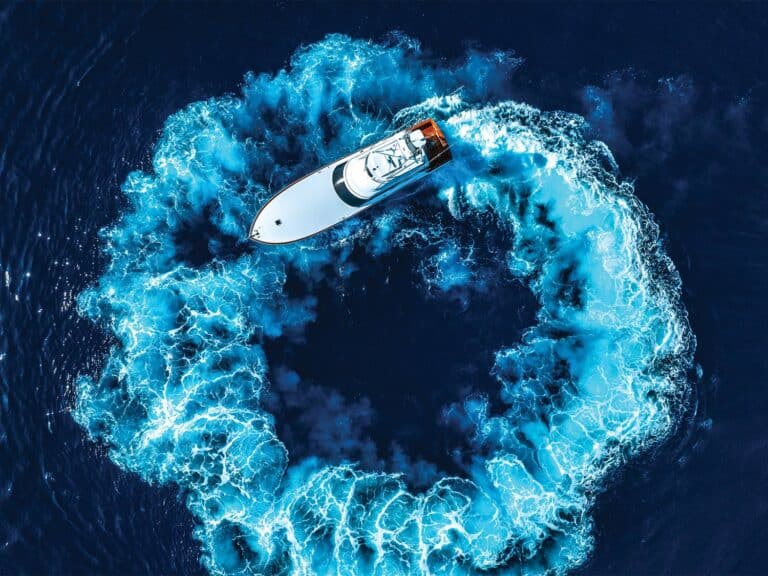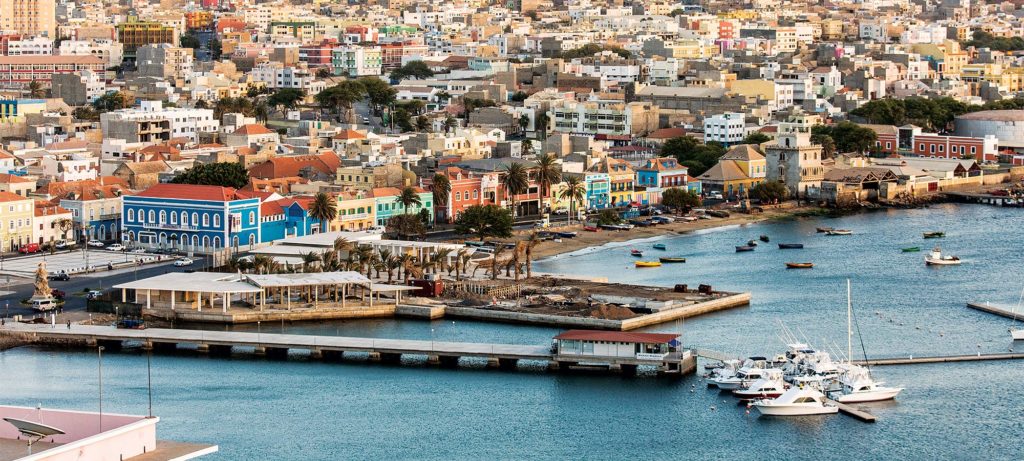
As my flight descends, I peer out at an alien landscape below. A volcanic island juts out of the Atlantic Ocean, with its cliffs rising at steep angles from the surrounding blue water. From above, the island looks like a rugged one, mostly reddish-brown rock with a few sandy beaches dotting the coast. To the northwest, I see another island, but its view is partially obscured by a sandy haze: dust from the vast Sahara Desert, 350 miles to the east. The wheels of the plane touch down with a squealing chirp, and I arrive at my destination for the next three and a half months: Cape Verde, Africa. The terrestrial landscape I observed through my plane’s window, however, is not what brought me to this remote archipelago; rather, it’s the abundance of blue marlin.
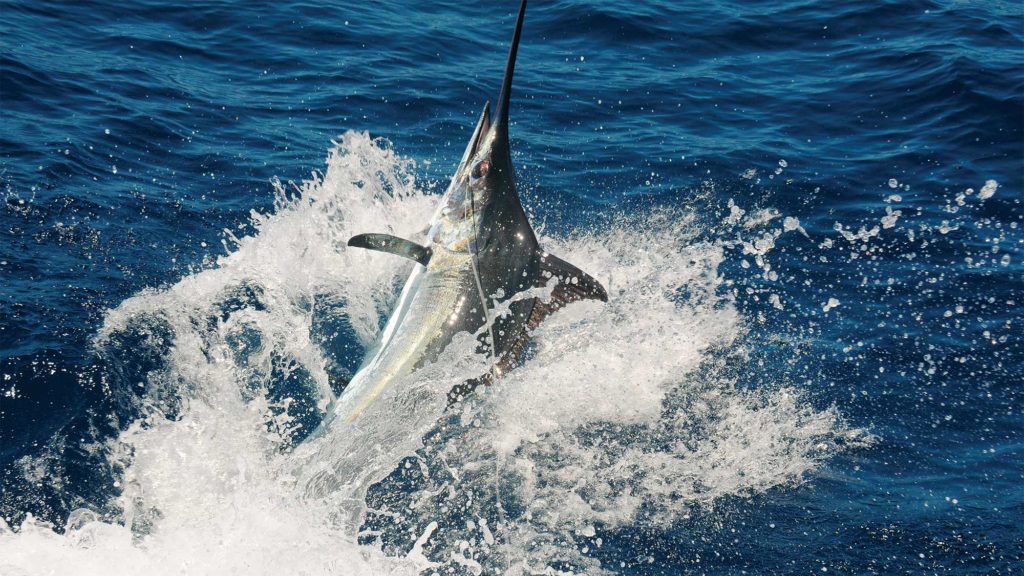
Big Fish and Big Numbers
Cape Verde is one of the world’s premier marlin-fishing destinations. In terms of numbers and size, its accolades speak for themselves. Anglers fishing these historic waters have brought to the scale more than 20 blue marlin over 1,000 pounds — with many more released — as well as two Blue Marlin World Cup winners. Gray Ingram’s Big Oh team released more than 400 blues in a single three-month season fishing here.
While these numbers are certainly impressive, it isn’t what inspired me to take a sabbatical from my job in Silicon Valley and move halfway across the globe to a place I could only recently point out on a world map. To me, simply coming here for the above statistics is like reading the last page of a good book: I might know the ending, but what makes it really special is everything that leads up to the conclusion. My goal was to experience firsthand — both the highs and the lows — what it is like to fish a season in these storied waters.
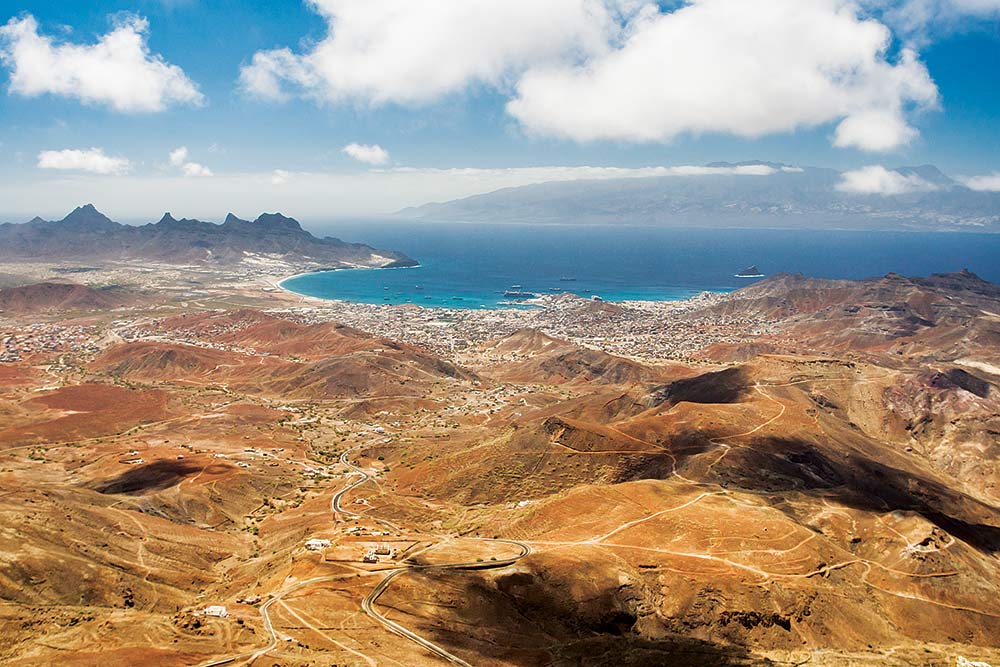
A Location of Despair and Rebirth
After clearing customs at the airport on the island of São Vicente, I hailed a cab to take me to the marina in the city of Mindelo. The second-largest city and cultural hub of the Cape Verde islands, Mindelo is home to a charter fleet, and it’s where I’m supposed to meet my host, Matthias Henningsen. He is the owner-operator of Atlantic Fishing Charters, managing three boats in Cape Verde (Hooker, Smoker and Sambo) and two more on Ascension Island, about 1,800 miles south.
I arrive at the marina in the early afternoon and take a seat at the floating bar adjacent to the charter slips. Henningsen, who is out on a charter, won’t be back for a few hours, so I order a Super Bock beer to help ease the impending jet lag. With some time to kill, I decide to do some research on the history of my new home.
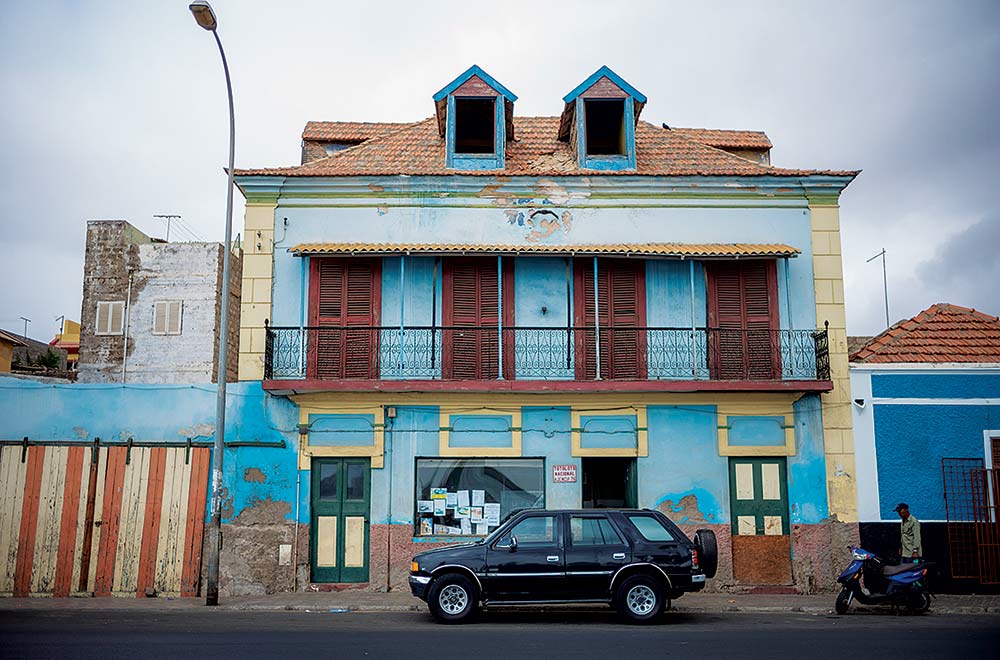
In 1456, Portuguese explorers discovered a string of 10 uninhabited islands off the coast of modern-day Senegal on the west coast of Africa. Lying at the crossroads of Europe, West Africa and the soon-to-be-discovered Americas, the islands’ strategic importance for oceanic endeavors of trade and exploration was immediately understood by the Portuguese. During this time, the transatlantic slave trade was ramping up, and Cape Verde soon became an important layover destination for crossing slave ships. Even though the nation has since rebounded from this troubled past, the remnants of the slave trade’s influence are still prominently seen throughout the islands — crumbling lighthouses situated at harbor entrances, colorful colonial architecture and the islands’ Creole culture of mixed African and European descent.
Learn More About Cape Verde, here.
Today, Cape Verde’s location, the one that made it so important for slave traders, is also helping it overcome years of economic stagnation. With temperatures averaging 74 degrees, eight hours of sunshine per day, zero tropical diseases, and direct flights from Europe and the eastern United States, Cape Verde’s tourism industry is on the rise. For marlin fishermen, this is welcome news; accessibility to this ostensibly remote location is improving with each passing season.
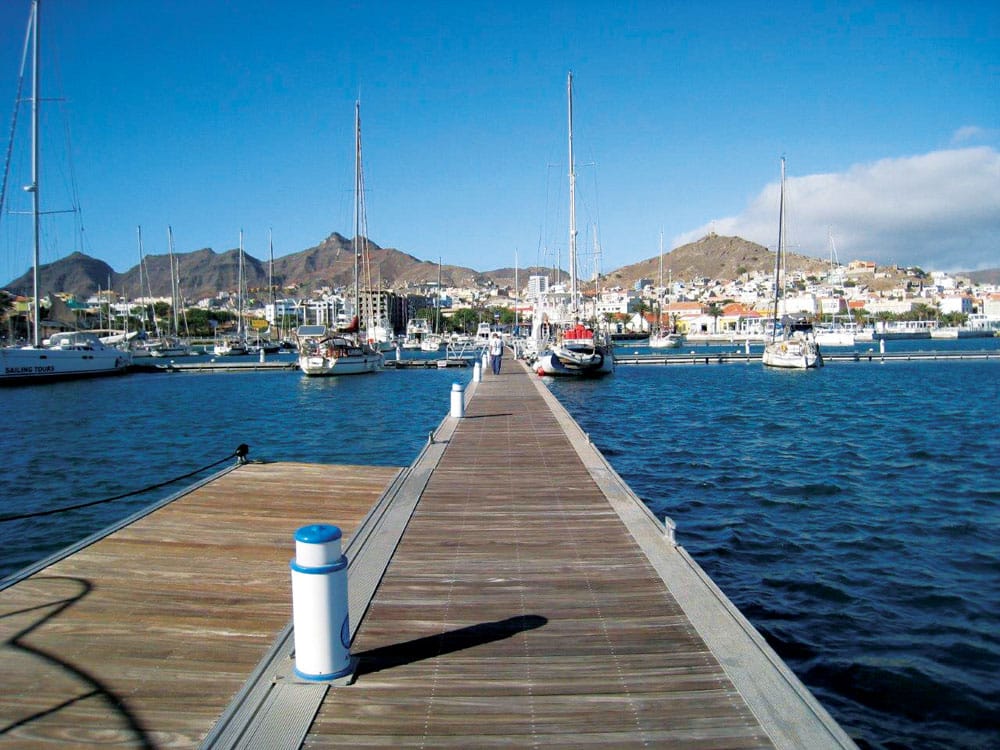
The Marlin Men of Cape Verde
At the end of the day, I see Hooker pull into the harbor with two white flags snapping in the breeze — two blue marlin releases. After the charter clients depart, I meet Henningsen for the first time, and to my relief, there is little small talk, getting right down to the business of marlin fishing. “The bite’s been a bit slow, but hopefully it picks up soon. Grab your bags and come meet some of the guys,” he says amicably.
We walk back toward the marina’s floating bar, and I can immediately tell this is the social nexus of the Cape Verde fishing community, a place where the fleet’s crews and clients intermingle to reminisce about the day’s action. It’s also where Henningsen introduces me to some of the other captains who helped put Cape Verde on the world’s fishing map: Berno Niebuhr, Olaf Grimkowski, Marty Bates and Zak Conde.
Today, Cape Verde is where these captains share the same water, but it is hardly the first time they have fished together. Over the past 20 years, these captains’ paths have often crossed as they hopped from one hot bite to another all over the eastern Atlantic, from Madeira, the Azores and Ascension Island to Ghana and the Canaries. Despite these worldly travels, I soon learn that Cape Verde is their hands-down favorite, thanks to some recurring themes: catching giant marlin on the pitch, the complete uncertainty of what’s going to show up in the spread and the flexibility to follow the bite to different islands.
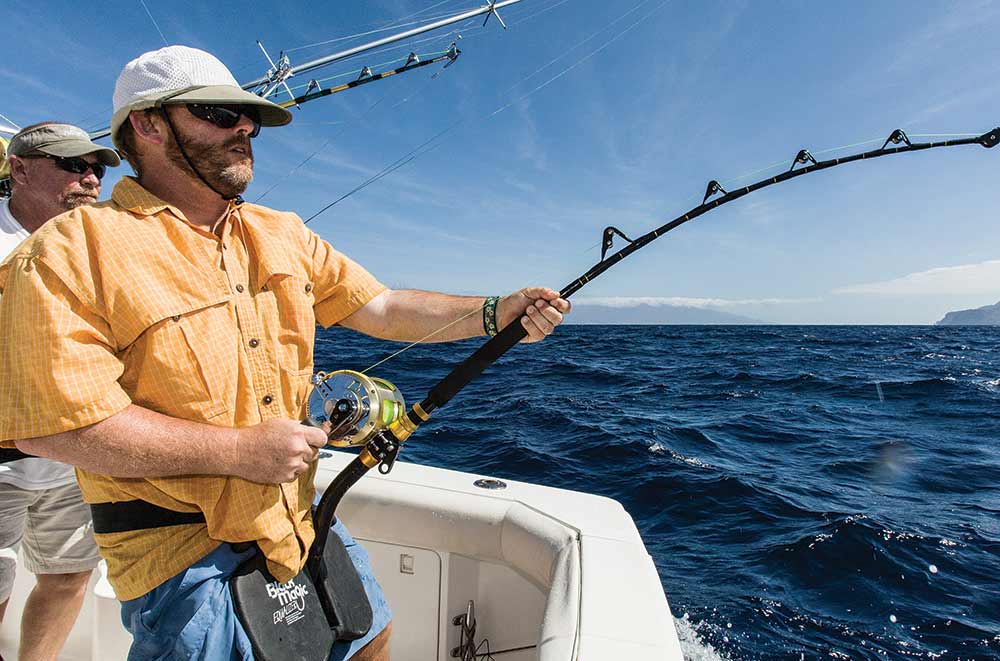
A Crash Course in Crash Bites
“Left teaser, left teaser!” Henningsen screams from the helm of the 43-foot G&S Hooker. Suddenly, there is an eruption of water as an angry blue marlin smashes the left short teaser. As I stand in awe, Wilson — a seasoned mate who has fished on Hooker for the past 16 years — doesn’t skip a beat as he throws a rigged flying fish with a chugger head behind the boat. On the initial bite, the marlin stripped 30 yards from the teaser reel, and Henningsen is frantically winding to get the teaser out of the water. As the teaser reaches the stern, the lit-up marlin makes a sudden 90-degree turn as it sees the flying fish splashing just outside the prop wash.
Only 30 feet away, and with a bite almost as violent as the first, the marlin launches itself halfway out of the water as it crashes the bait. After giving the marlin five seconds of drop-back, Wilson pushes the Tiagra 50W’s drag to strike, and the fish immediately begins greyhounding across the surface. After a 30-minute battle, the 600-pound blue marlin is boatside — tagged and released.
I was instantly addicted. For me, this is as close to fishing nirvana as one can hope to get. Conde, one of the most seasoned captains in Cape Verde, fishing here for the past 13 years, has similar feelings after hearing my story. “Nothing beats the pitch,” he says. “Nothing.”
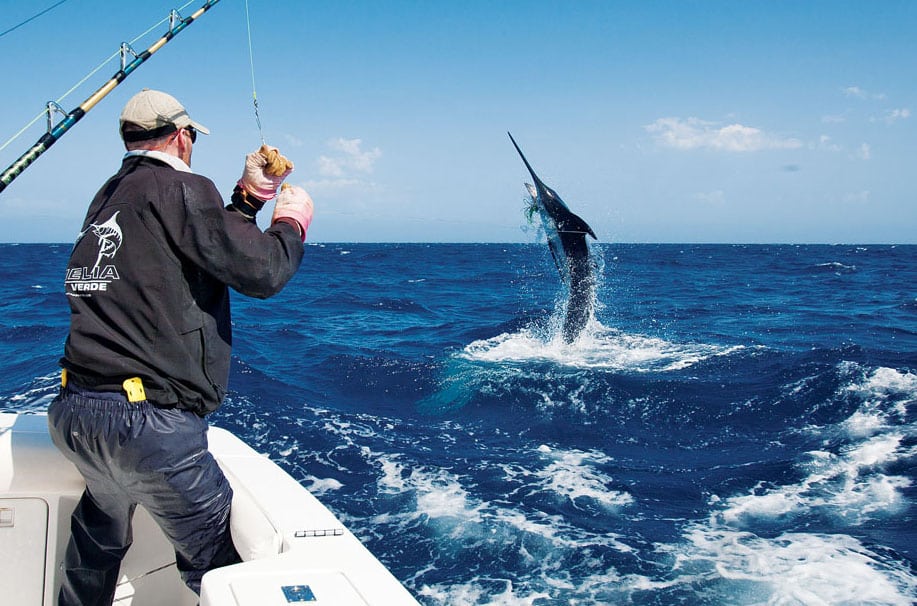
The following day, I was fishing on Conde’s boat, Amelia, discussing the optimal spread for fishing in Cape Verde. Conde says the best spread consists of three teasers, a dredge and a lure on the shotgun. “This setup maximizes the chance of catching a marlin on the pitch, which is a great bite, with a better hookup ratio than on lures,” he points out. “Depending on the size of the fish, we can pitch the appropriate gear, from 30-pound-test for smaller fish all the way up to 130-pound-test if it’s a really big one. And the shotgun lure gives us one last chance at a marlin if it fades off the teasers before taking the bait,” he adds.
The Thrill of the Unknown
When fishing in Cape Verde, it’s impossible to know what is going to show up in the spread. For both Niebuhr and Grimkowski, this is what makes it so thrilling to fish here.
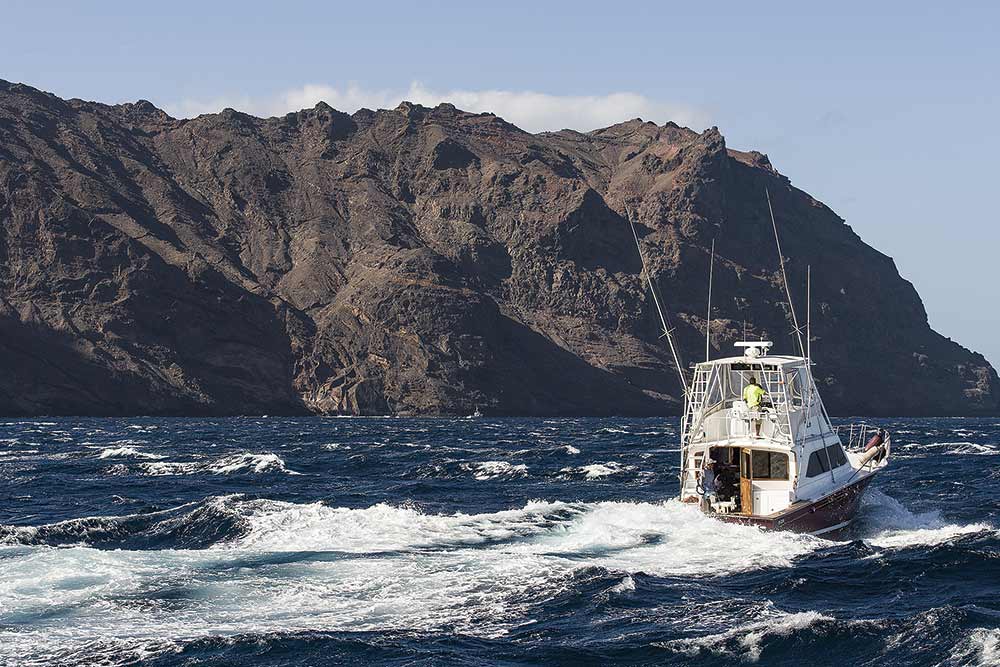
After a day on the water, I sit down with these captains and order another round of Super Bocks at the floating bar. The most tenured captain of the fleet, Niebuhr has fished the waters of Cape Verde for more than 20 years. As our beers arrive, he transports me back to the early days: “Even though it has come a long way, when I first arrived, this place was completely off the map,” he says. “It was difficult to get fresh water, spare parts, and even finding a restaurant was an adventure. But honestly, what has kept me here is the incredible fishing.”
Having officially weighed nine granders and won the Blue Marlin World Cup twice, Niebuhr knows a few things about fishing for big blues. After taking a sip of his beer, he describes one of his most memorable catches. “Without telling me, one of my mates put out some ugly lure with a big pink head that I would have taken out of the spread if he showed me,” he relates. “Luckily, I didn’t. About midday, a huge marlin came up and engulfed it. It was mad, and we fought the fish for over two hours before we got it close to the boat. Then, with just 15 meters of line out, we heard a loud pop and the rod snapped in two. We connected a second rod to the leader, and after another 30 minutes, had the marlin in the boat. It ended up weighing 1,241 pounds.”
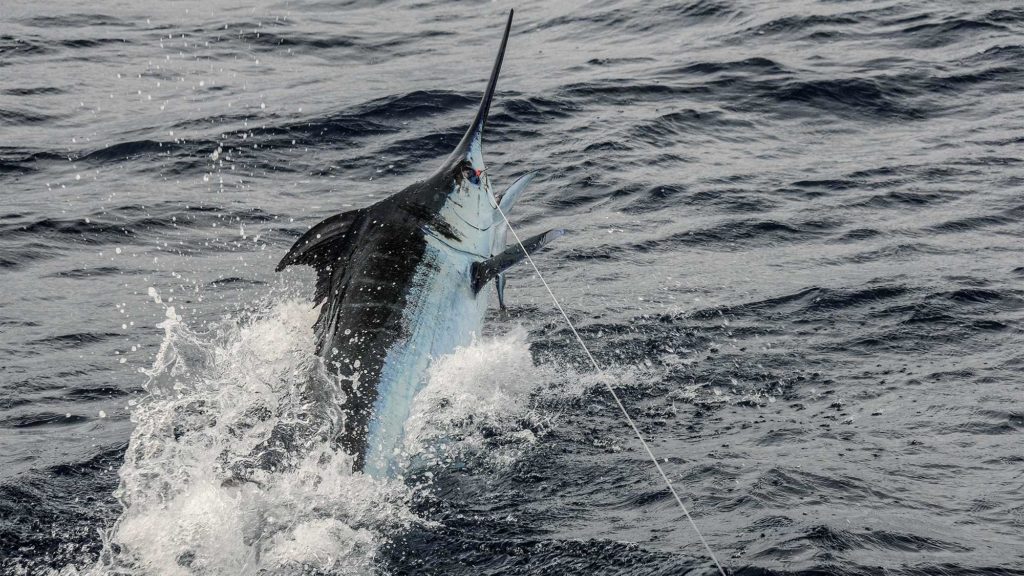
Another captain who isn’t a stranger to big fish, Grimkowski — the only captain to weigh two Atlantic blue marlin over 1,300 pounds — notes that even though Cape Verde certainly has big fish, it’s the numbers that makes this location his favorite place to fish. He tells me about one incredible day: “The fishing was slow, but in an instant, that changed — it was pandemonium behind the boat, with every teaser having a marlin behind it,” he says, talking with his hands as many marlin captains do. “We pitched all three of our rods and immediately hooked a marlin on each — two of them over 500 pounds. Then, even after having a tripleheader on, there were three more marlin behind the boat trying to eat the teasers that were hanging off the transom. I don’t think blue marlin fishing like that can happen anywhere else in the world.”
After a few more stories about big fish and big numbers, Grimkowski sums up why fishing in Cape Verde is so special: “You just don’t know what you’ll see next. It could be a 250-pounder or a 1,000-plus-pounder; it could be a single, a double or a triple. You just don’t know.”
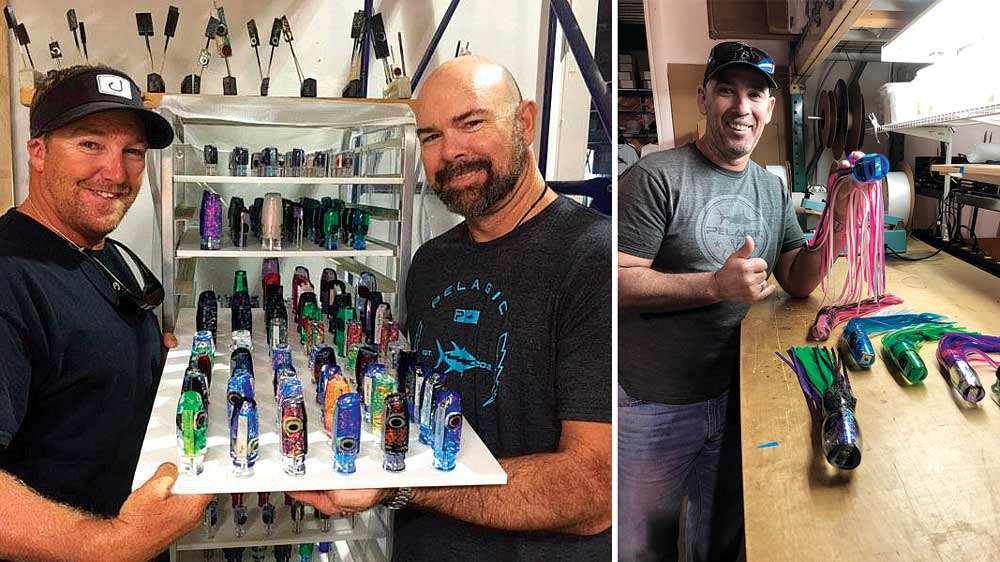
Pack Light and Follow the Bite
As I put some months of fishing under my belt, one thing remained constant — the relentless chatter over the radio. In Cape Verde, the location of the bite can change in an instant, and communication among the captains is critical to success. Using the radio as a weapon, the captains wage a coordinated assault on the marlin as they chase the bite across three islands: Santo Antão, São Vicente and São Nicolau.
Bates, a New Zealander who captains La Onda Mila, has been fishing professionally since 1996 and is one of the most vocal captains on the radio. “The community here is like nowhere else — it’s a great group of guys, and we rely on each other for information,” he says. “If someone finds the bite, they let the fleet know. If I find the bite, I do the same. We all help each other out.”
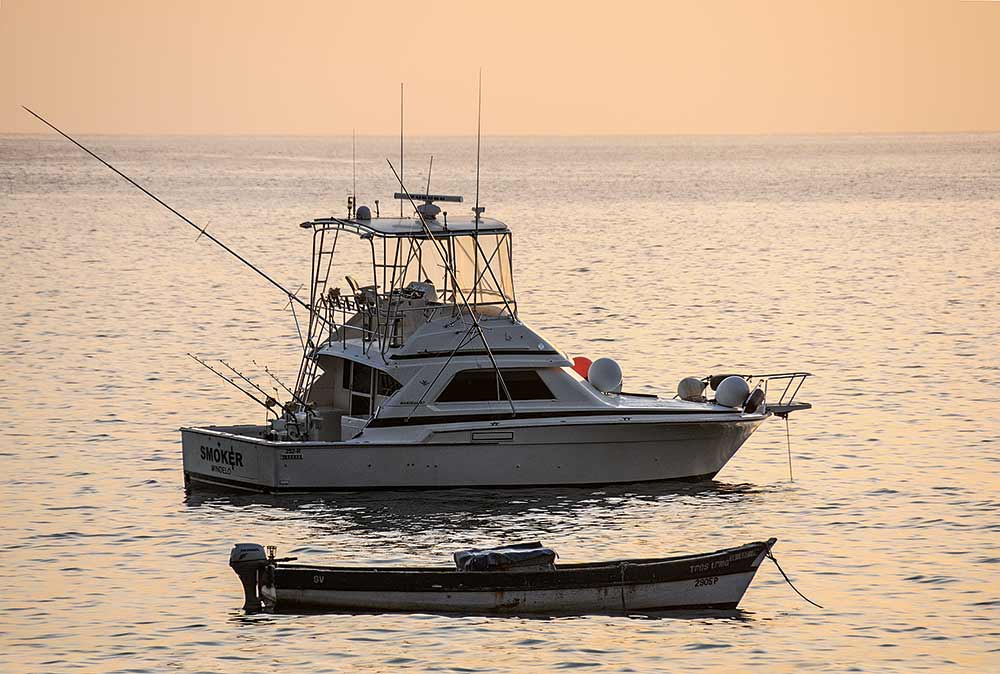
Then, with a smile, he says it isn’t all serious business either. “We’re all close friends, so with that comes a lot of trash-talking,” Bates says. “We’re a competitive group, and we all want to catch the most marlin. It’s part of what makes this such a special place to fish. The captains want to catch a marlin more than the clients.”
Describing the different locations, Bates starts with the northwesternmost island, Santo Antão. “Here, you fish on the western lee side of the island, making for comfortable conditions,” he says. “Santo Antão is also the launching pad to get to the Northwest Bank, a pair of underwater mountains that rise from the seafloor 9,000 feet deep to 120 feet from the surface. This is the land of giants, and fish of 1,290, 1,245 and 1,150 pounds have been caught near here in recent years.”
Moving east to São Vicente, Bates notes: “You can fish either to the north or the south, so there’s always plenty of room. The fishing here can be off the charts too — there were two years where we rarely traveled to another island since the fishing was so good. It’s also nice to have the comforts of Mindelo after a day on the water.”
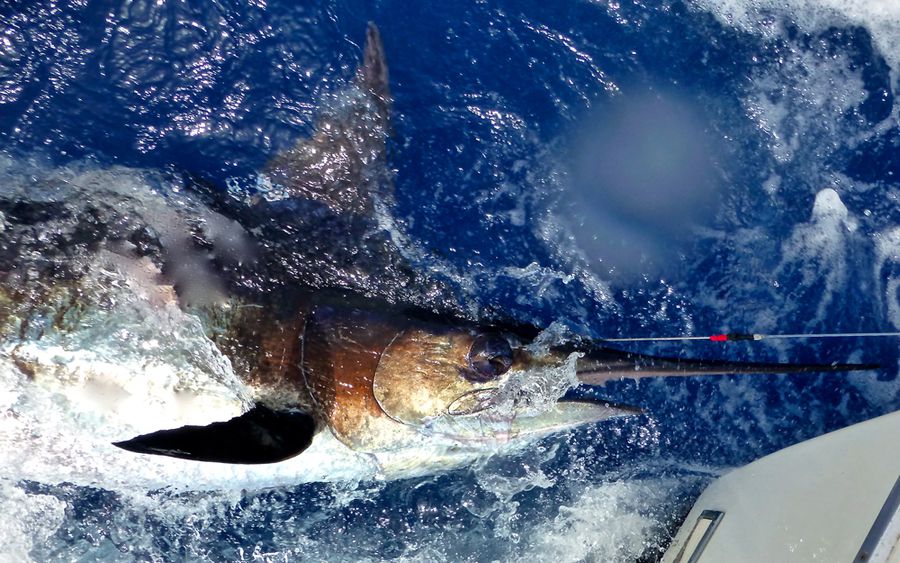
Lastly, the easternmost island of São Nicolau, Bates says, can be insane when it turns on. “The marlin concentrations off the southern bank can be nuts — many captains have had 10-plus blue marlin releases here in a single day.”
A Place Like No Other
As I depart Cape Verde after three and half months of fishing nearly every day, I look out one last time at the islands. Instead of the remote moonscape I saw when I first arrived, I think instead about all the memories I’d made. Even though I had experienced unbelievable fishing, seeing multiple 900-plus-pound fish and numerous doubleheaders, that won’t be the first memory. Instead, I think of exploring the small villages on the islands of Santo Antão and São Nicolau, the late nights telling fishing stories on the floating bar in São Vicente and, most of all, the incredible people I met along the way.
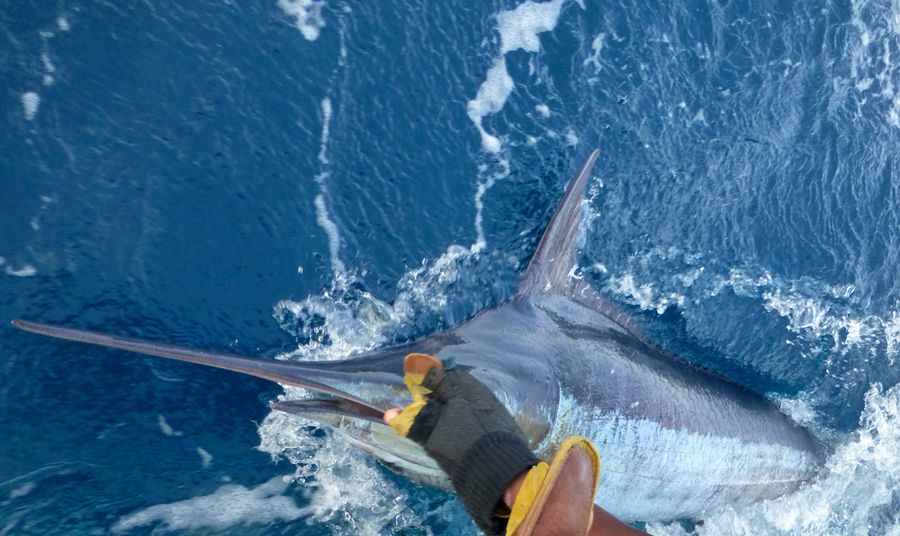
As I left for the airport, Henningsen shook my hand and simply said, “See you later, Jimmy.” This couldn’t be a more fitting sentiment, since I know I will return soon to these distant yet wondrous islands.
